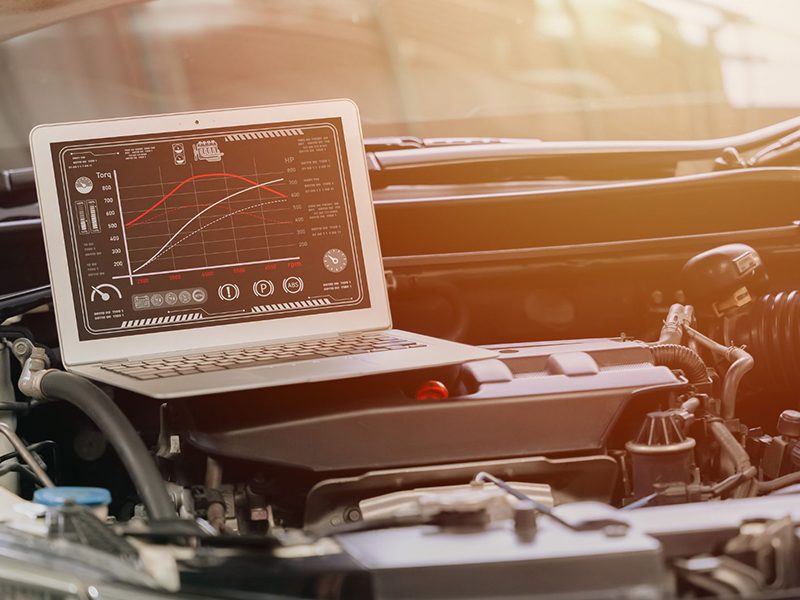What exactly does CC mean in an engine — and how does it relate to engine horsepower? Understanding the link between CC and HP is key when buying or repairing a car.
Think of your car engine as a set of lungs: the bigger they are (in CC), the higher the volume of air and fuel they can draw in and thus the more power they can produce. Let’s explore what CC means in engines and how it impacts performance, so stick around and find out!
Engine Capacity and What CC Means in Engines
CC stands for cubic centimeters and indicates the engine’s total internal cubic capacity — the space where oxygen and fuel mix to create power output – also known as cubic volume or engine size.
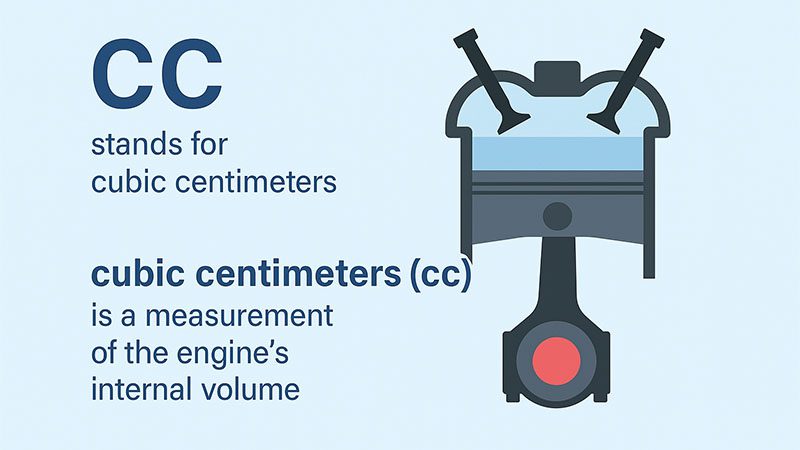
The capacity of an engine is typically calculated based on the total volume of oxygen and fuel that the pistons (swept volume) candisplace during their movement.
What is Horsepower?
James Watt’s horsepower is the most commonly used measurement of a car’s horsepower. It indicates the maximum amount of output an engine can generate in optimum working condition.
In more technical terms, 1 horsepower = 550 foot-pounds of work per second (or 745.7 watts in the metric world). In short, this means an engine producing 1 horsepower can move 550 pounds one foot in one second.

Here are the two most common methods of measuring:
- Crank Horsepower: Motor measured at the car’s engine’s crankshaft, before drivetrain losses; used in official specs.
- Wheel Horsepower: Power measured at the wheels (brake horsepower), reflecting a cars’ actual output after drivetrain losses.
So, if a manufacturer states that an engine has 100 equivalent horsepower, it usually means that it has a maximum of 100×550 foot-pounds of work per second of mechanical power.
Engine Cubic Capacity and Horsepower Relationship
Determining the direct relationship between CC and HP (CV) isn’t as straightforward as one would imagine, especially when trying to convert accurately.
Various factors affect an engine’s output, including compression ratio, fuel injection, engine design, forced induction, fuel consumption and quality, environmental factors, etc.
A great example of a downsized engine with big power is the latest Mercedes M139 engine, which squeezes an incredible 421 CV from just a 2.0L turbocharged powerful engine — that’s over 210 CV per liter, the highest of any production 4-cylinder.
On the flip side, the iconic yet lazy 1975 Cadillac Eldorado uses an 8.2L V8 that produced 190 CV, or just 25 CV/liter. These cars’ extremes show that the engine depends on design, tuning, and tech more than size.
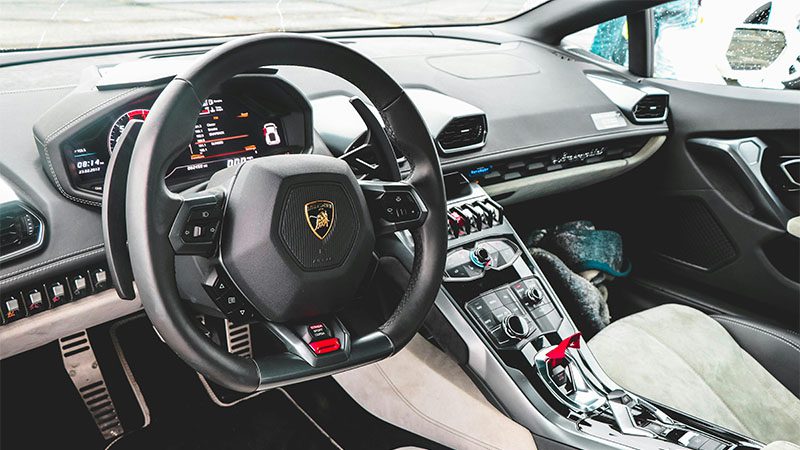
HP Calculator Basics and Engine Measurement Units
As we already mentioned, a car’s engine size is measured in cubic centimeters (cc) — the total internal size of all the cylinders.
This means that 1,000 cc equals 1 liter, so a 2.0L engine has a displacement of 2,000 cc. On the other hand, horsepower is a unit of power, often used to express output. It can be converted to kilowatts, where 1 CV ≈ 0.7457 kW.
It’s also important to state that most manufacturers these days round up their CC numbers, which means that 1,900+ engines are 2 liters, 2,190+ engines are 2.2 liters, and so on.
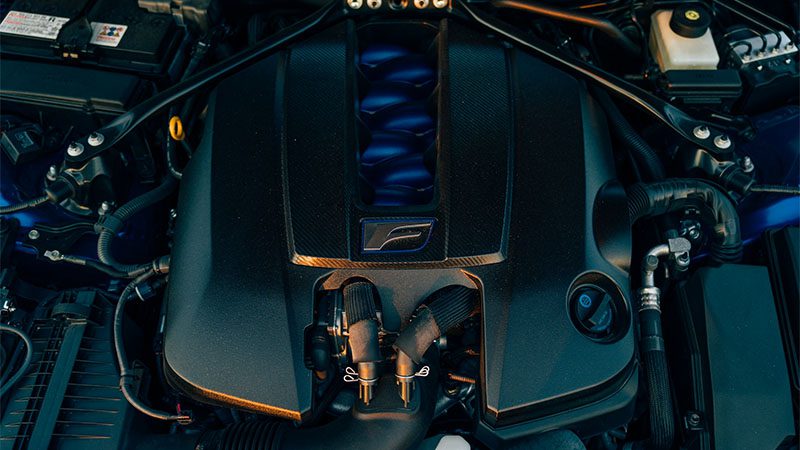
Calculating CC from HP – HP Calculator
The most common way to calculate horsepower is by multiplying an engine’s rotational force by its revolutions per minute and dividing that number by 5,252. This formula (HP calculator) highlights how both twisting force and rotational speed work together to produce sheer grunt.
On the other side of the spectrum, a car’s engine displacement is calculated using the cylinder bore (diameter), stroke (piston travel), and the number of cylinders an engine works with.
All in all, larger displacement car engines can physically draw in extra air and more fuel at any given period, which often results in greater power and more speed, though tuning and forced induction also play major roles.
The general rule:
- Horsepower (CV) = (TRQ × RPM) ÷ 5,252
- Displacement (CC) = Volume of all cylinders (Bore × Stroke × Cylinders)
- More CC = More fuel/oxygen mixture = Potential for extra power
- Different factors like turbocharging, compression ratio, and engine tuning significantly affect CV output
Think of engine displacement like the size of a bottle — a bigger bottle can indeed hold more water, just like a bigger engine can hold in more air and fuel.
Be that as it may, just because it’s LARGER doesn’t mean it POURS FASTER or with more force — that depends on the car’s design, pressure, and many additional measurement units and factors we are about to go into next.

Which Factors Affect Engine Performance?
Since many factors influence engine speed and performance, here’s a clean table showing key factors that influence horsepower, CC, and overall engine performance, along with some expanded entries for further context:
| Factor | Influences HP? | Influences CC? | Why and How? |
|---|---|---|---|
| Engine Design | ✅ Yes | ✅ Yes | Determines airflow, combustion efficiency, and layout of cylinders. |
| Tuning / ECU Mapping | ✅ Yes | ❌ No | Adjusts fuel, ignition, and boost for optimal performance. |
| Bore and Stroke | ✅ Indirectly | ✅ Yes | These define displacement and affect the output curve. |
| Number of Cylinders | ✅ Indirectly | ✅ Yes | Impacts smoothness, displacement, and delivery. |
| Turbocharging/Supercharging | ✅ Yes | ❌ No | Forces oxygen into the engine, increasing output without increasing CC. |
| Fuel Type & Quality | ✅ Yes | ❌ No | High-octane fuels enable aggressive tuning. |
| Air Intake & Exhaust Flow | ✅ Yes | ❌ No | Breathing improves combustion and efficiency. |
| Compression Ratio | ✅ Yes | ❌ No | Higher compression can improve equal thermal efficiency and power. |
| Valve Timing (VVT/VTEC) | ✅ Yes | ❌ No | Adjusts engine valves for better performance across the range. |
| RPM Range (Redline) | ✅ Yes | ❌ No | Higher RPM capability means extra output at top-end performance. |
| Cooling System Efficiency | ✅ Indirectly | ❌ No | Keeps temperatures in check for superior definition. |
| Wear/Engine Overhaul | ✅ Yes (negatively) | ❌ No | Older engines often lose grunt due to age-related wear and tear. |
| Transmission & Drivetrain | ✅ Indirectly | ❌ No | How effectively does output reach the wheels? |
| Altitude / Air Density | ✅ Yes | ❌ No | Less oxygen at higher altitudes = less pull. - unless it's a turbo |
Convert CC to HP with Ease – Ideal for Any Engine Size
Keep in mind that converting CC to HP using the CC ÷ 15–17 formula is a rough estimate. It works reasonably well for naturally aspirated gasoline engine cars, but it falls short in cases involving turbocharging, electric or hybrid systems, diesel engines, or high-performance cars.
These factors can significantly increase or reduce actual horsepower compared to what the formula suggests.
With that out of the way, you can estimate an engine’s horsepower using the following convert hp formulas:
- CC ÷ 15 = Higher-end estimate (performance-tuned or efficient engines) – BEST CASE
- CC ÷ 17 = Lower-end estimate (more conservative or older engines) – WORST CASE
Example:
If you have a 1800cc engine:
- 1800 ÷ 15 = 120 HP (upper range)
- 1800 ÷ 17 = 106 HP (lower range)
So, the estimated range for this car’s engine would be somewhere between 106 HP at the lower end and 120 HP at the top end.
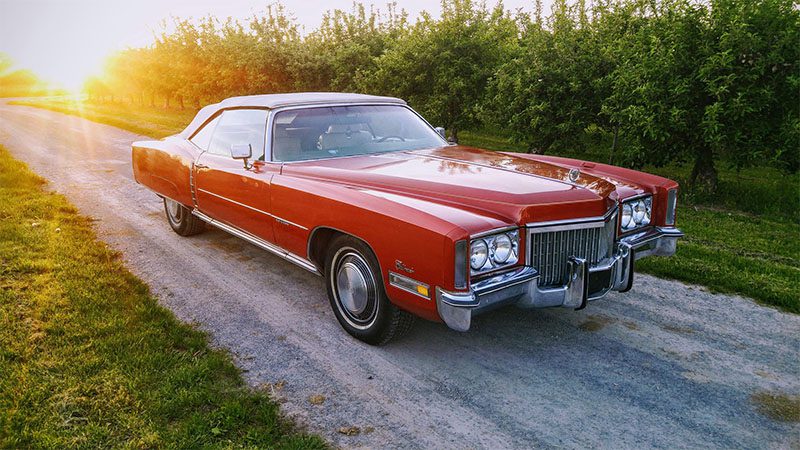
CC to Horsepower Measurement Examples
With the aforementioned formula in mind, you can convert hp from cc to hp for many other cars, but be aware of the limitations mentioned at the beginning of the previous paragraph.
You can click here if you want to convert cc to hp yourself!
| Engine Type | CC | Estimated HP | HP per 1000cc |
|---|---|---|---|
| Small Scooter | 150cc | 10 | ~67 |
| Motorcycle | 600cc | 100 | ~167 |
| Compact Cars | 1,500cc | 100 | ~67 |
| Performance Cars | 5,000cc | 450 | ~90 |
| Turbocharged Sports Cars | 3,000cc (Turbo) | 500 | ~167 |
To conclude, we can confidently state that CC alone does not determine horsepower – various factors such as a car’s tuning, fuel injection, and design (to name a few) matter.
How Engine Capacity Impacts Performance
Even though CC to hp don’t always exactly correlate, there are ways how one can optimize engine performance through tuning and thus make more power.
A higher CC engine doesn’t ALWAYS offer more power, but it offers greater potential for power output than a smaller engine, simply because it has more breathing room – it can push more air and fuel per cycle.
Whether it makes more horsepower in actuality depends on how that displacement is utilized, or in other words, if the engine is optimized for more power through careful design and tuning.
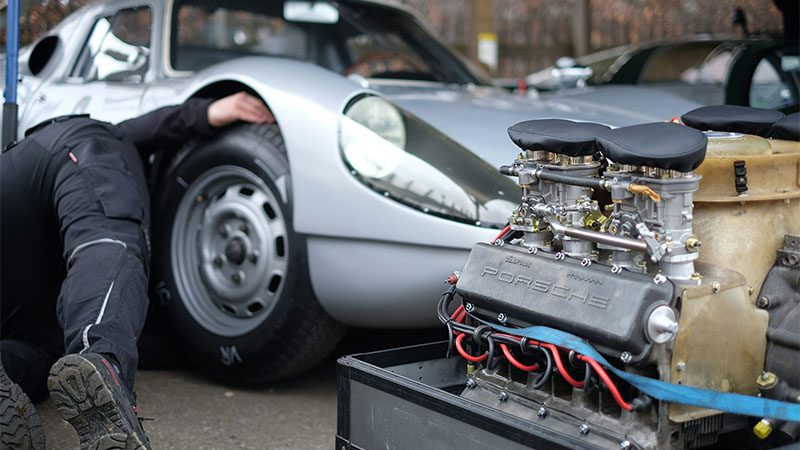
Frequently Asked Questions on Engine Displacement
What Does CC Mean in Engines?
CC stands for cubic centimeters, and it is used to describe the engine’s total internal volume or displacement — the space available for air and fuel within the cylinders.
Is Higher CC Always Better?
Not every time. A higher CC count means more power potential, but a car’s actual performance depends on tuning, engine design, and efficiency (to name a few).
How Do I Convert CC to HP?
You can divide CC by 15–17 for a rough estimate for most engines out there, but keep in mind that higher cc generally means more power potential. A general example would go something like this: for 1800cc ÷ 15 = 120 HP (upper (top-end) range), ÷ 17 = 106 HP (lower (low-end) range).
What’s the Difference Between HP and Torque?
Torque is the twisting force that gets things moving, while horsepower determines how quickly that force is applied. One delivers the shove; the other keeps the speed climbing.
It’s the difference between how hard you hit the wall and how fast you hit it.
Does a 1,000cc Engine Make 100 HP?
Nope, it usually never does. Power output depends on a car’s engine type, design, and tuning. A 1000cc engine could make anywhere from 50 to 200+ HP, but that’s not always the case.
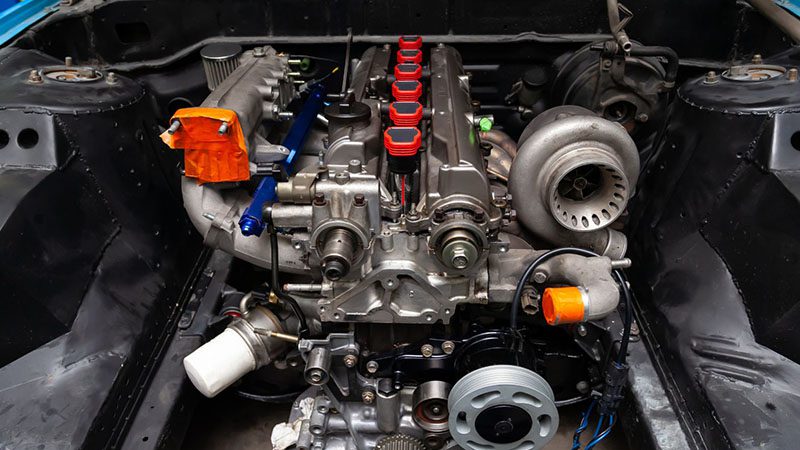
Final Thoughts – What’s the Difference Between HP and CC?
To summarize today’s topic, CC (cubic centimeters) tells you the size of a car’s engine, while horsepower (HP) reveals how much power it can produce in optimum conditions.
Although more CC often means more breathing room for power, performance also depends on many other factors, such as engine speed tuning, fuel delivery systems, the RPM range, and the design of the engine.
No matter how you look at it, if you are serious about boosting your engine’s performance, focus on quality parts that maximize the efficiency of your engine setup, and this is where we come in!
Need OEM or Aftermarket Parts You Can Trust?
With 25 years of experience, Nanjing Woda Auto Technology Co., Ltd. is your trusted B2B partner for high-performance motors and replacement auto parts. Based in Nanjing, China, we supply over 100,000 products for engine systems, ignition, suspension, steering, electrical, exhaust systems, and more — all tailored for B2B clients and backed by:
✅ Genuine, tested quality
✅ Competitive B2B pricing
✅ Fast, global logistics
✅ Dedicated customer service & after-sales B2B support
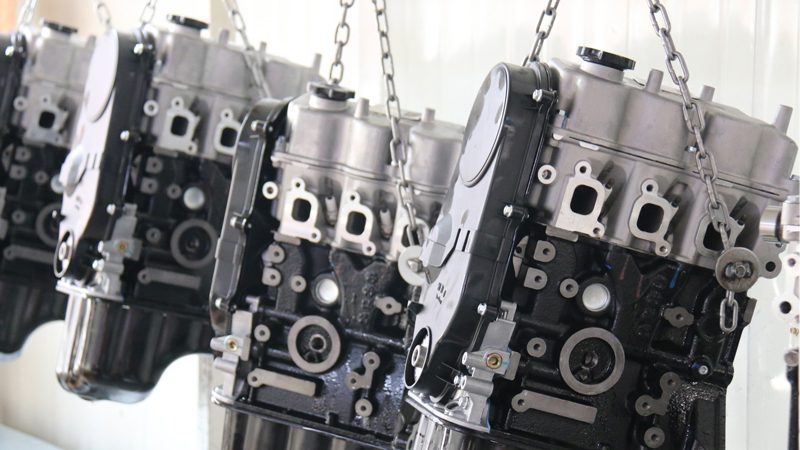
No matter if you’re looking for performance hardware for resale, manufacturing, or fleet maintenance, we offer the reliability, volume capacity, dependability, and expertise your business needs to stay ahead of the curve!
Get in Touch with Nanjing Woda Auto Technology today — and let’s grow your business together.

